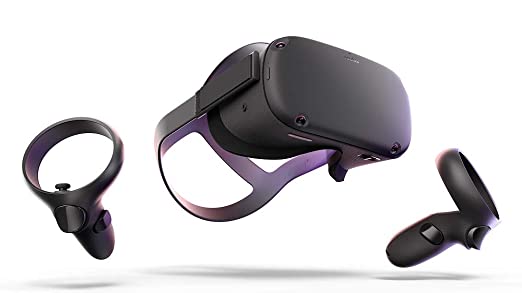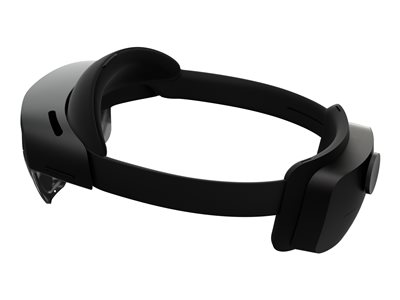Oculus Quest vs Microsoft HoloLens 2
When you compare the Oculus Quest to the Microsoft HoloLens 2 you can see which VR Headset is better. Let's take a look of the comparison, and see which model of VR Headset out ontop.
 Oculus Quest
Oculus Quest4.5
Based on 1 reviews
What VR Headset is better?
When comparing the Oculus Quest and Microsoft HoloLens 2 virtual reality headsets, it is clear that there are some major differences between them. The Oculus Quest has a stand-alone VR system and offers a wide 95° field of view, while the Microsoft HoloLens 2 uses mixed reality with a narrower 52° field of view. The resolution on the Oculus Quest is 1600 x 1440 px, while the HoloLens 2 offers 2048 x 1080 px. Both headsets offer room scale 360 tracking and refresh rates of 72 Hz for the Oculus Quest and 60 Hz for the HoloLens 2.
The main difference between these two headsets is in their individual capabilities. With its stand-alone VR system, the Oculus Quest allows for an immersive experience with its high resolution and wide field of view, making it great for gaming or other applications where detailed visuals are important. On the other hand, due to its mixed reality technology, the Microsoft HoloLens 2 provides a more realistic environment than regular VR headsets by allowing users to interact with digital objects in their physical space.
In terms of overall performance, both headsets have their pros and cons depending on what they’re used for. The higher resolution on the Oculus Quest gives it an advantage when it comes to gaming or other visual applications as images appear sharper and more detailed compared to those seen through lower-resolution displays like those found on some mobile devices. Additionally, its wider field of view makes it easier to look around without having to move your head too much which can be useful when exploring virtual environments or playing certain games that require quick reactions.
On the other hand, although not offering as much detail as most dedicated VR systems like those found on PC-based hardware setups, Microsoft's mixed reality headset does provide a more interactive experience than traditional virtual reality thanks to its integration with physical objects within your space - this could be useful in educational or training situations where you might need hands-on instruction before being able to fully grasp concepts presented virtually in front of you. Additionally, due to its smaller form factor compared to most dedicated VR systems like HTC Vive Pro or Valve Indexes , Hololens2 may be more comfortable if you plan on wearing it for extended periods of time since all processing takes place inside your headgear instead requiring external computing power from desktop PCs or consoles .
In conclusion , I believe both products offer something unique that could be appealing depending on user needs . For instance , if you're looking for an immersive gaming experience then I'd recommend going withOculusQuest sinceits higher resolution provides an edge overother offerings while Microsoft'sHoloLens2is better suited towardsmore practical tasks suchas work related presentationsor small group trainingsessions . In my personal opinion though , I'd picktheHololens2overtheOculusQuestdueitsoverall portabilityand easeof usewhich makeit ideal foreveryday tasks like checking emailsor browsing webpagesin 3D environments .
Specs comparison between the two VR Headsets
| Oculus Quest | Microsoft HoloLens 2 | |
|---|---|---|
| Overview | ||
| Brand | Meta | Microsoft |
| Model Name | Quest | HoloLens 2 |
| Release Date | 2019 | 2019 |
| Country of Origin | United States | United States |
| Category | Standalone VR | Mixed Reality |
| Battery Life | 3 h | 3 h |
| Display | ||
| Field of View | 95° | 52° |
| Resolution | 1600 × 1440 px (per eye) | 2048 × 1080 px (per eye) |
| Refresh Rate | 72 Hz | |
| Display Type | OLED | |
| Minimum Requirements | ||
| Min. CPU Required | Intel i5-4590 or AMD Ryzen 5 1500X or greater | |
| Min. Graphics Required | Nvidia Titan X GTX 1060 or GTX 1070 or RTX 20 series | |
| Min. RAM Required | 8 GB | |
| Operating Systems | Microsoft Windows | |
| Sizing | ||
| Weight | 571 g | |
| Dimensions | 190.5 x 104.14 x 114.3 mm | |
| Features | ||
| Room Scale? | YES | YES |
| 360 Tracking? | YES | YES |
| Positional Tracking? | YES | YES |
| Front Camera? | No | YES |
| Eye Tracking? | No | YES |
| Usable with Glasses? | YES | YES |
| Cooling System | YES | |
| Built in Headphones? | YES | YES |
| Built in Microphone? | YES | YES |
| Flip Visor? | YES | YES |
| Voice Command? | YES | YES |
| IPD Adjustment? | YES | YES |
| Lens to Eye Adjustment? | No | YES |
| USB? | YES | YES |
| MicroUSB? | no | |
| Display Port? | YES | |
| Mini Display Port? | No | |
| HDMI? | No | |
| MicroSD? | No | |
| Bluetooth? | YES | YES |
| Wifi? | YES | YES |
